Prominent OT Figures
by B. van Cleve
The ‘Prominent OT Figures’ window is situated on the east side of St. Peter’s Church. Three of the lights of this Kempe window and were completed in 1880, the fourth light, which depicts ‘Samuel’, was completed in 1898.
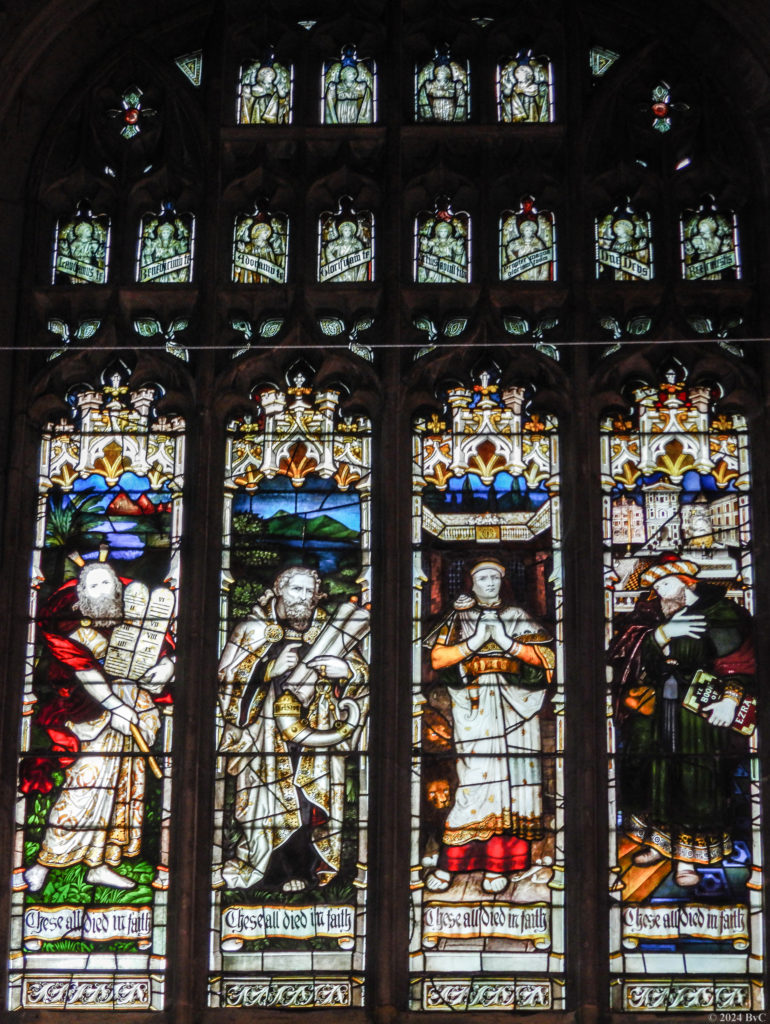
There are three tiers in this Kempe stained glass window. The first two are made up of angels presiding over the whole scene. The main tier of four OT figures is separated from them by a row of artistic embellishments.
This window is noteworthy for its intricate detail. Some features are easy to miss, especially since this window is fairly high up on the wall, above the main entrance of the church.
The Heavenly Realm
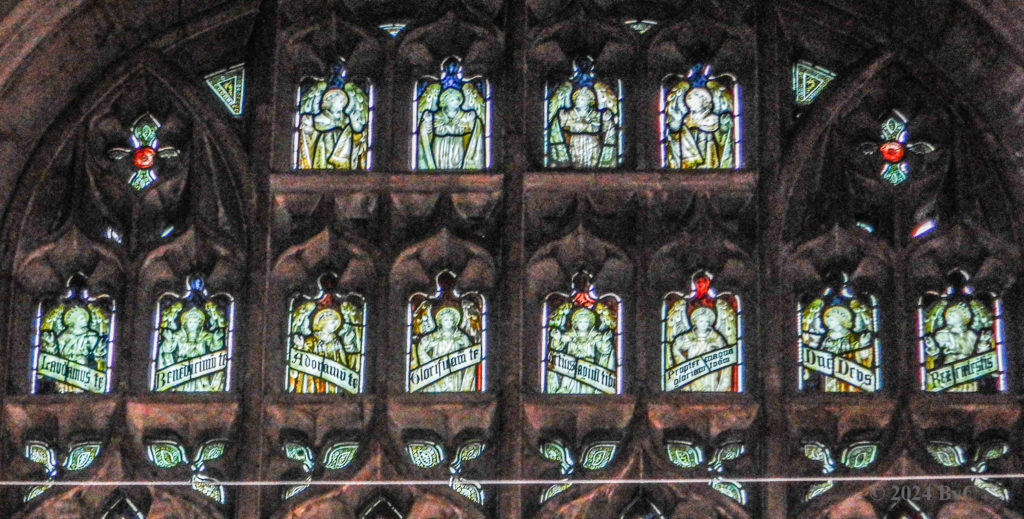
The first tier consists of some embellishments and four angels, which simply preside over the scene. In the second row eight angels are depicted having banners with Latin writing, and again, the text is heavily abbreviated. This text is taken from:
Gloria in excelsis Deo et in terra pax hominibus bonae voluntatis
Glory to God in the highest and peace on earth amongst those with whom he is pleased
Only, these first two phrases are omitted. They can be found elsewhere in St. Peter’s church, namely on the east wall below the Lady Chapel windows.

The text the angels display on their banners reads as follows:
Laudamus te We praise you
Benedictimus te We bless you
Adoramus te We adore you
Glorificamus te We glorify you
Gratias agimus tibi We give you thanks
Propter magna gloriam tuam Because of your great Glory
Dominus Deus Lord God
Rex caelestis Heavenly King
The Earthly Realm
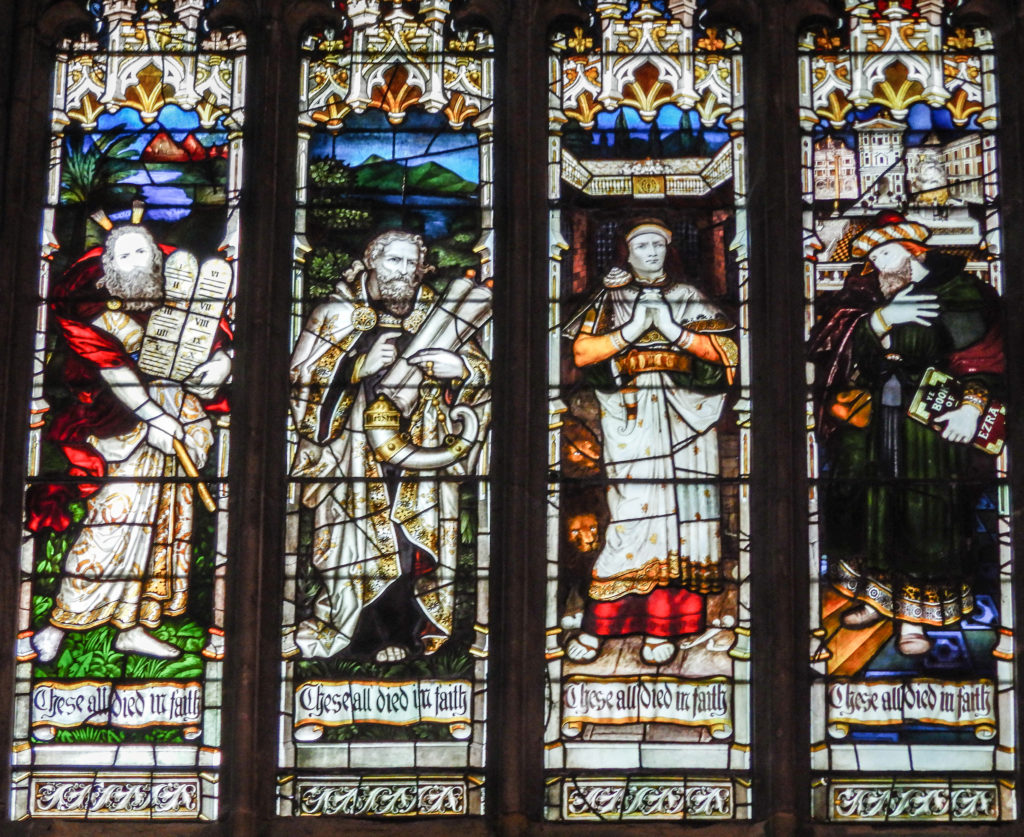
The tier underneath the band of embellishments shows four figures who are featuring prominently in the OT. All of them have a banner below their feet with the writing:
These all died in faith
Esra
The figure furthest to the right is the only one depicted with his name. The artist seems not to have found enough characteristic criteria to help the observer work out his identity. So he simply depicted him with his book in his hand to reveal the name.
Moses
The figure on the left has two stone tablets with the ten commandments in his left arm and a staff in his right hand. Also his face is lighter than that of the other three figures. These characteristics are sufficient to discern that this figure must be representing Moses. The white face is probably thought to convey that his face was shining when he had been in the presence of God.
Samuel
The second figure from the left is the most difficult to recognise. He has a large scroll in his arm and a very elaborate horn hanging down from his hand. When magnified, some letters can be seen around the rim of this horn. These letters read ‘Oleu S’tum’, which is an abbreviation, probably necessary because of lack of space. It is very likely that it should read:
Oleum Sanctum – (Holy Oil)
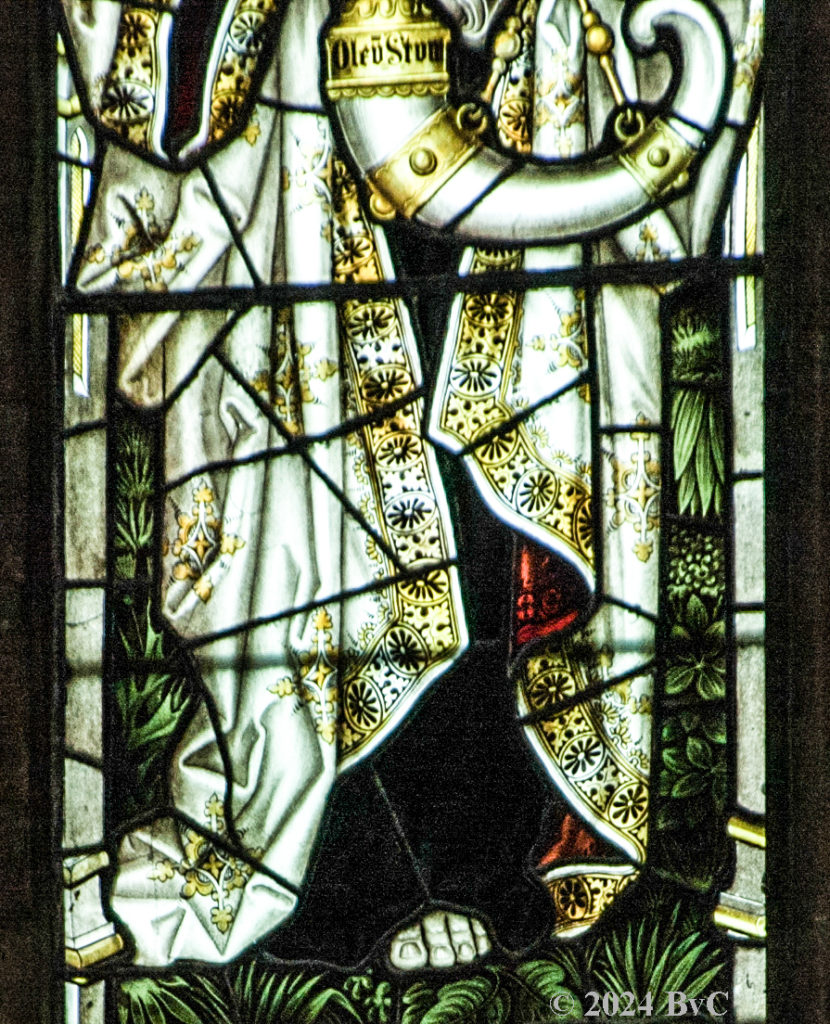
This figure is, according to ‘The Corpus of Kempe Stained Glass in the UK and Ireland’, representing Samuel. And we know from Scripture that one of the most important tasks of Samuel’s ministry on this earth was to anoint the first two kings of Israel – Saul and David.

Daniel
The fourth figure (the second from the right) is clothed differently to the other three, and he is the only one without a beard. He is also the only figure depicted inside a building. All other figures feature in nature or in a town or a settlement of some description. The identity of the fourth figure is given away by the two fierce predators at his side. The scowling look on the lions’ faces is so realistic that it is worth a closer look. The expression on the faces of these beasts and even details like mane and whiskers are executed absolutely convincingly.
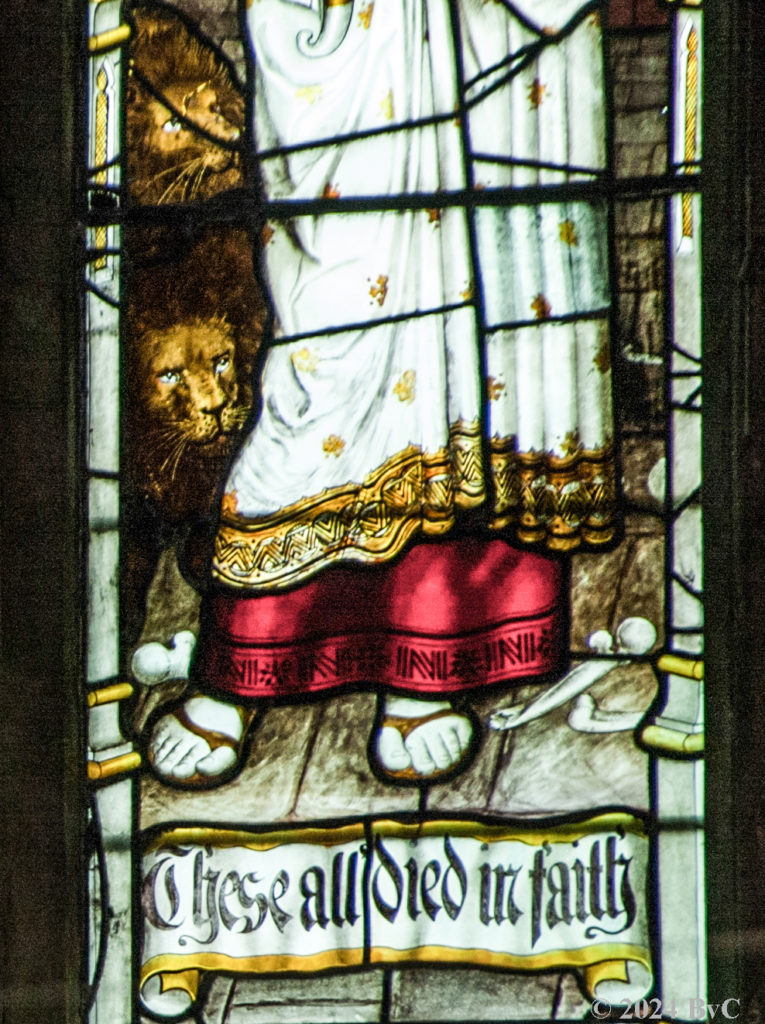
The eyes of one of the lions are glaring up at the figure as if to say: ‘There goes my dinner.’ The second lion has the same piercing look, but it is directed not at the person next to the lion, but slightly upwards as if in thought, maybe pondering: ‘Just watch it, my time is coming!’
This fourth figure cannot represent anyone other than Daniel, who was thrown into the lion’s den for the steadfastness of his faith and his persistence in prayer. And we read that he was saved by an angel of God, so the lions could not do him any harm.
All images © B. van Cleve
← previous window – next window →
Floor plan of stained glass windows in St. Peter’s church Brighton
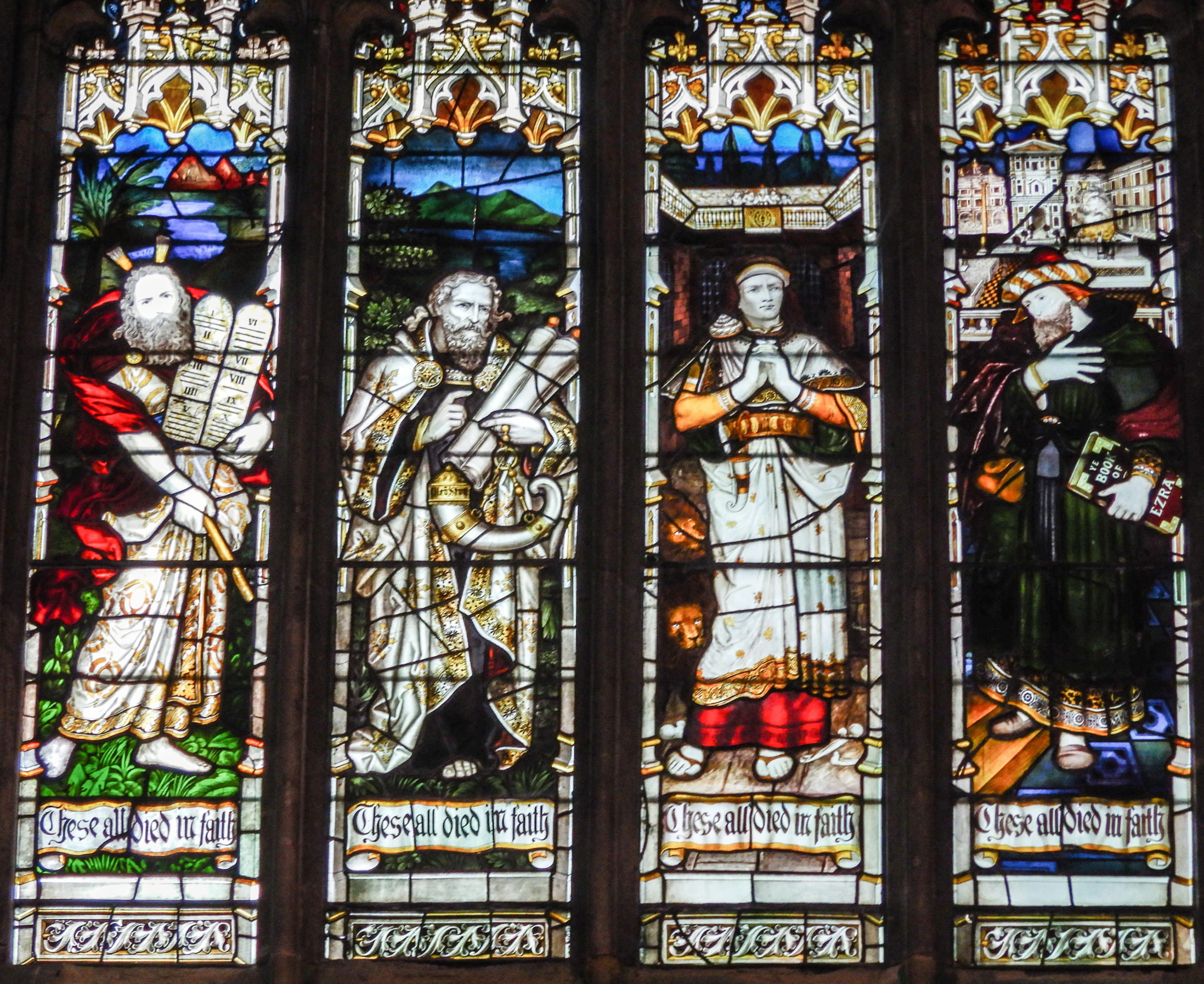
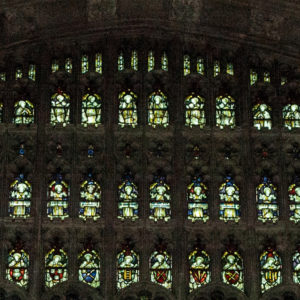
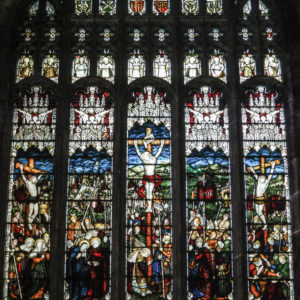
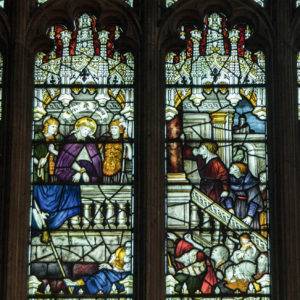
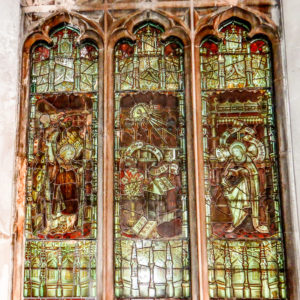
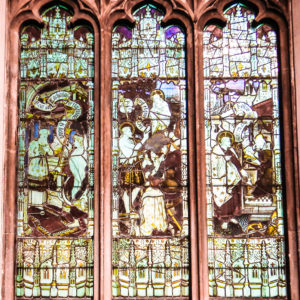
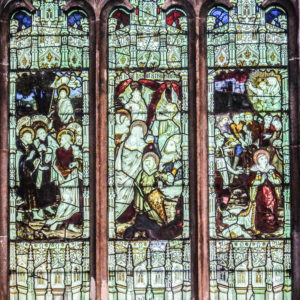
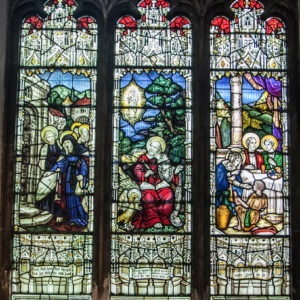
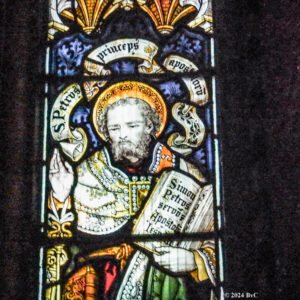
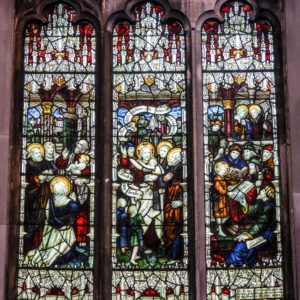
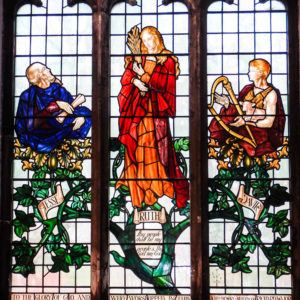
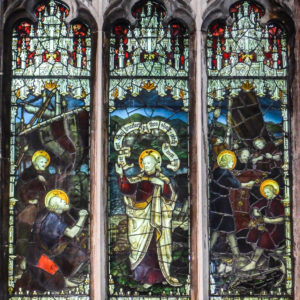
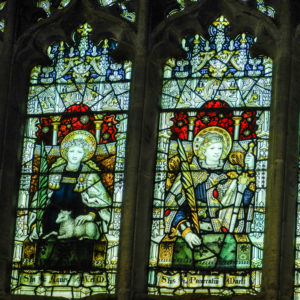
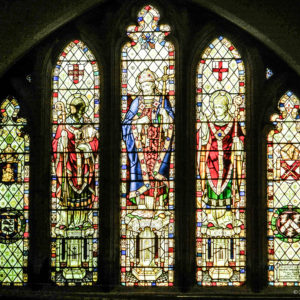
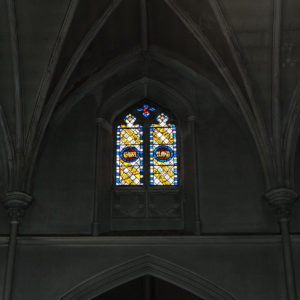
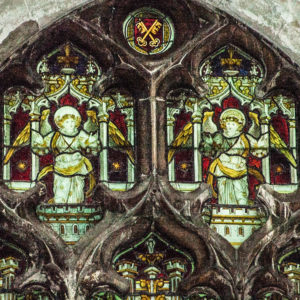
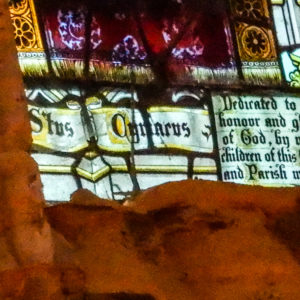
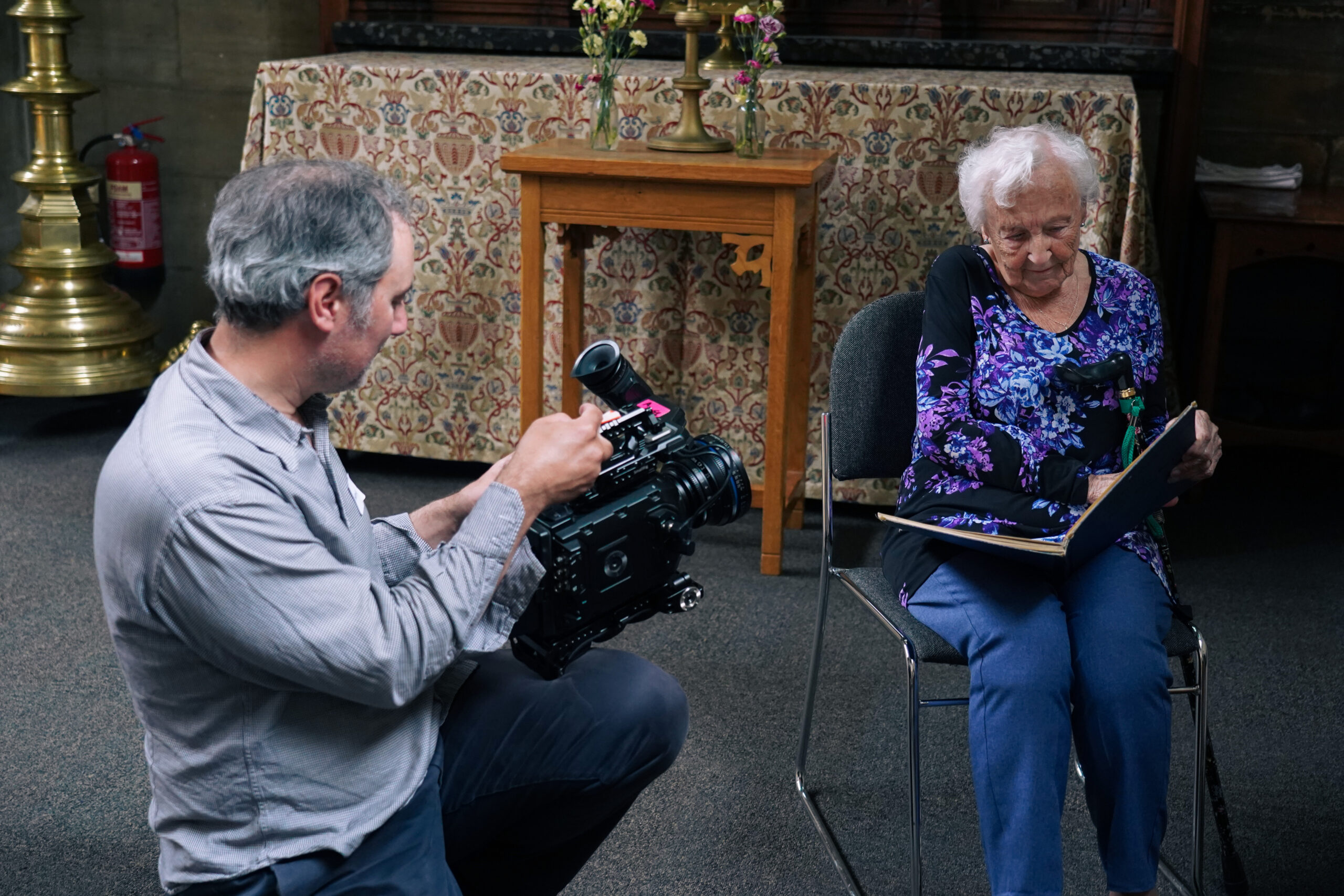



‘This project is kindly funded by Historic England as part of the Everyday Heritage - Working Class Histories. We are grateful to them for this funding.’